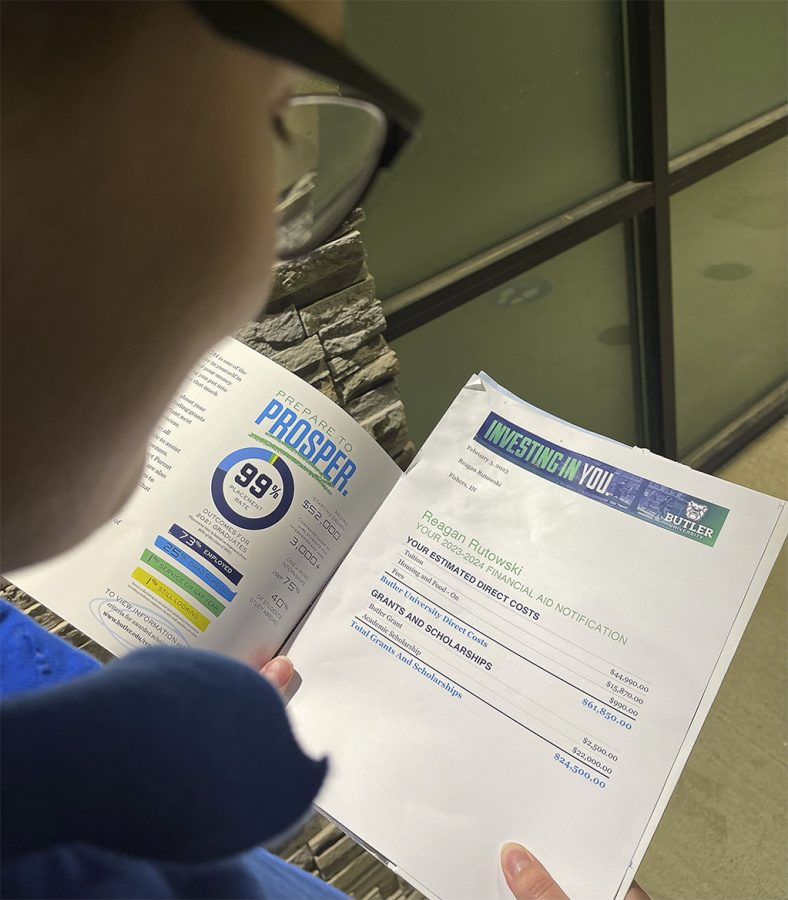Who’s to Pay?
Photo by Bren
Senior Reagan Rutowski looks at a recent mailing from Butler University. The packet describes the financial aid and scholarships she’s received.
May 25, 2023
After the four rigorous years of high school, it’s finally time to graduate. You’ve done it. High school is behind you and college is on the horizon, yet a question makes you pause: “How will I pay for this?”
Today, college costs significantly more than it did decades ago. According to the Education Data Initiative, the average cost of tuition and fees at a public four-year school has risen 179.2% over the last 20 years, annually increasing by a rate of 9%.
While it is true that higher education is a priceless asset, it’s slowly becoming unachievable for students due to rising costs. As job requirements fluctuate, the demand for higher education increases, increasing the demand for a degree, which only raises the price even higher. As a college education becomes more valuable, the assistance of scholarships, financial aid, and grants become steadily more scarce for applicants.
While federal aid is available for graduating seniors, they shouldn’t have to be reliant on these programs to simply attend school. It doesn’t help that pursuing higher education is strongly encouraged in high school, with specific classes tailored to prepare us for a future that might be unreachable. There are alternative options to attending college, and yet they’re often looked down upon and aren’t valued in the same way that universities are.
Community colleges are often assumed to have lower-quality programs, and trade schools are often presumed to provide “inferior education” to their students. This stigma deters many high school students from even considering alternate education as an option.
So why? Why does it seem as if a college with these costs is the “required” option for students after high school? It goes without saying that receiving a higher education plays a role in the potential job offers available in the future, and college is an important stepping stone for many, but it’s not the only option. And, while higher education creates advantages for those who obtain it, the expense puts those who need it most at a huge disadvantage.
In our reality, we shouldn’t have to choose between attending an overfunded school and gaining student debt. We shouldn’t have to worry about scraping up loose change to afford to get an education. The same system pushing us students to attend college should be the same system making it affordable and accessible for us all.




